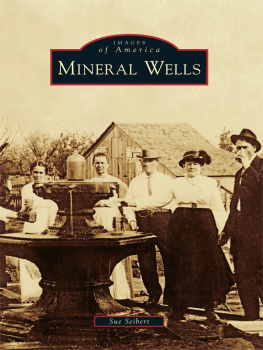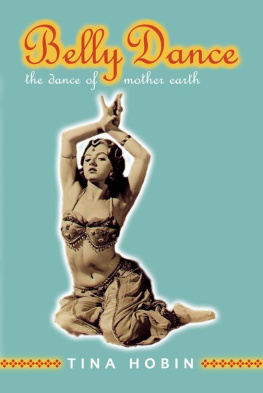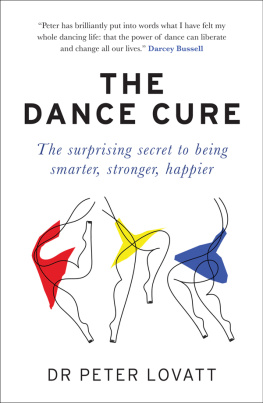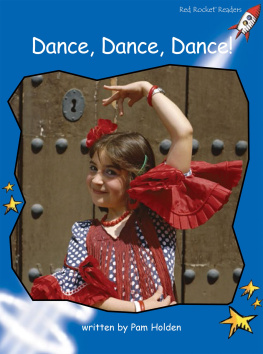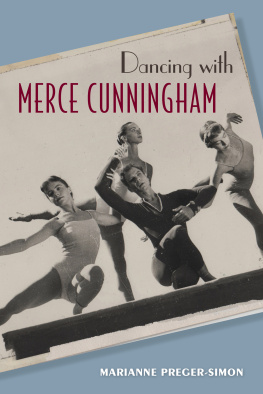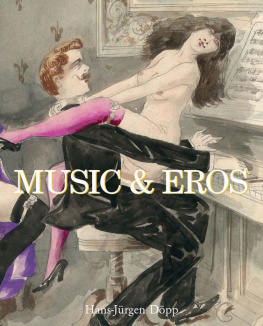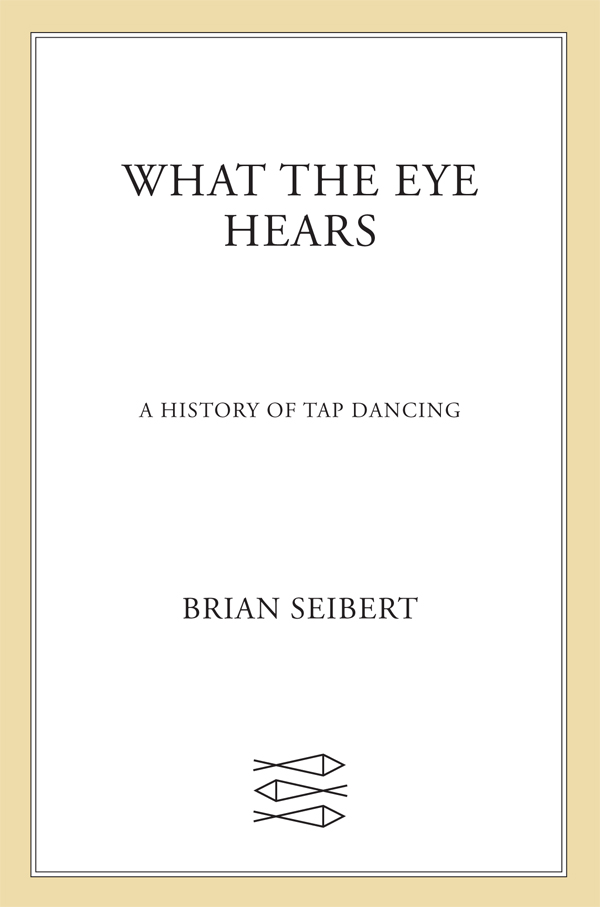Contents
Guide

The author and publisher have provided this e-book to you for your personal use only. You may not make this e-book publicly available in any way. Copyright infringement is against the law. If you believe the copy of this e-book you are reading infringes on the authors copyright, please notify the publisher at: us.macmillanusa.com/piracy.
On a Sunday afternoon at the beginning of this century, if you walked by a certain small club in midtown Manhattan, you would hear tap dancing. And if you went inside, you might discover, as the source of that sound, a man nearly ninety years old. Snug in a stylish suit, his shirt unbuttoned halfway down his bony chest, he tapped out rhythms that swung hard. Age might have robbed him of the elasticity to perform the scissoring kicks and jive splits hed been whipping off less than twenty years before, but he had learned to execute his steps with minimal effort. As long as he was dancing, he was buoyant, indefatigable, still moving with the speed of youth, and prone to revolving his hips like a stripper. Then suddenly he would stop, flatly declare he was tired, and break the spell, deflating into a fragile old man who had to be helped offstage. The transformation was poignant. He made it a joke. Im sure happy to be here, he would say. At my age, Im happy to be anywhere .
His name was Buster Brown, and this was his Crazy Tap Jam. Squinting, he would scan the tables of Swing 46 for a dancer ready to perform, asking in his high, throaty voice, Whos got their shoes on? In response, Frankie Clemente, a four-year-old with a buzz cut, might escape his family, slide into the raised stage with a thud, and scramble over the lip. Lay it on me, Buster would say, and Frankie, stamping his feet arhymthmically, would swing his arms and spin and stand on his toes in rough approximations of steps hed seen older dancers do. The control that Buster was slowly losing, Frankie had yet to acquire. If Busters dancing was spare and suggestive like Chinese painting, Frankies was coloring outside the lines. People cheered for both.
The more they applauded, the more difficult it became to convince Frankie to surrender the stage. Whichever moves provoked the loudest response, those he would shamelessly repeat. Otherwise, his movements appeared random, as did the occasions when he stumbled upon a coherent rhythm. Then his body seemed to express a different satisfaction. When he first started dancing at Swing 46, Frankie was two, and he clearly apprehended the joy of making noise. But at four, perhaps he also felt an intimation of the subtler pleasure of making music.
As haphazard as Frankies attempts seemed, they aimed toward the models he witnessed each week. He swung his arms while he stamped his feet, because he realized that both were part of the game. His actions suggested an understanding of a defining feature of tap dance: that it falls between categories, or across them; that it is dance and music, sound and movement. Tap makes music visible, matching aural patterns with shapes in space. You can watch a film of a dancer like Buster Brown, turn the volume off, and still nearly hear the beats. Its music for the deaf. Yet tap also makes movement audible. Close your eyes and you can almost see weight shifting. Call it dance for the blind.
Most dance arises from an interaction between music and movement. But because tap can be both dancing to music and dancing as music, its especially concerned with the combination. As the tap dancer Paul Draper once explained, What the eye sees is sharpened by what the ear hears, and the ear hears more clearly that which sight enhances. A dancer jumps up at a tilt with bent knees, shaping his legs into a bell; when, still in the air, he brings his heels together, that bell rings. The motion that propels a trainlike step is what makes it sound like a train. The relation can be that blatant, but also highly subtle, as in the minute calibrations of force and weight with which a heel is dropped. Theres also pleasure in not seeing the sound, in not being able to discern the source. At top speeds, a tap dancer can articulate a dozen or more discrete sounds per second. You hear a flurry of beats and cant account for them allsomething has been slipped in, a bonus. Its sleight of hand, made by foot.
In practice, dancers tend to lean toward one pole or the other, emphasizing sound over movement or the reverse. The two are in tension, one often working at the bidding, or the expense, of the other. The pursuit of rhythmic intricacy and gradations of timbre pools action in the feet, so that tap dance becomes a standing drum solo in a jazz club where your view of the dancer is partial, or an audio recording in which you cant see the dancer at all. Or the dancers attention moves to figures in space, to body parts upon which were more accustomed to reading emotion, and to gestures, which, however eloquent, make no sound.
To put it another way, all music begins in movement: hands on keys, breath on reeds. But a musician dances incidentallytwisting to reach for a note, keeping the beatwhile for a tap dancer, the motions that make the music are to be developed for their own sake. This fact locates tap between the potential abstraction of music and the unavoidable humanity of dance, in which the instrument is the body, the person. Tap similarly falls between two sides in the centuries-old debate about what dance should be, a form of storytelling or a nonrepresentational art. As music, tap has access to pure form. And yet, in its most popular manifestations, tap has been all about personality. It has been situated, not always comfortably, in narrative genres such as musical comedy. Tap can be comic, with comedy as physical as a clowns, but here, too, it is most distinctive in musical interplay, in the wit of how a rhythm is parceled out across parts of the feet.
I have one more theory about taps appeal. Perhaps the most powerful part of our response to any kind of dance is kinesthetic: the way we seem to feel in our own muscles and bones what we see in the muscles and bones of the bodies were watching. Tap combines this with what I think of as the kinesthetics of hearing: the way that hearing is a kind of touch, blasts of air knocking against the eardrum. We sense this most obviously in low, rumbling frequenciesin music that you feel, rolling through you like thunderbut its operating all the time. Add to that our primal reaction to rhythm, and tap dancers have a potent set of kinesthetic responses to work upon.
In any case, Frankie Clementes banging pointed toward the ideal, the dynamic equilibrium of sound and motion, just as his habit of making things up on the spot served as a crude version of improvisation. He was, after all, participating in a jam session in the jazz tradition, what Ralph Ellison famously called the jazzmans true academy, a site of apprenticeship, ordeals, initiation ceremonies, where the musician must achieve, in short, his self-determined identity. Thats a lofty description of what went down at Swing 46, but most dancers there fulfilled the tacit expectation that they test themselves in the moment. For many, improvising was an excuse to shirk the effort of putting together a routine. Yet for more serious dancers, improvising could be the harder roadrequiring both a lightning-quick, fertile imagination and the technique to realize their ideas without hesitation. In a sense, the goal of improvisation is unreachable: to take the shock of invention and make it constant. Nevertheless, for jazz musicians, including the tap dancing kind, its the ultimate measure of prowess.


